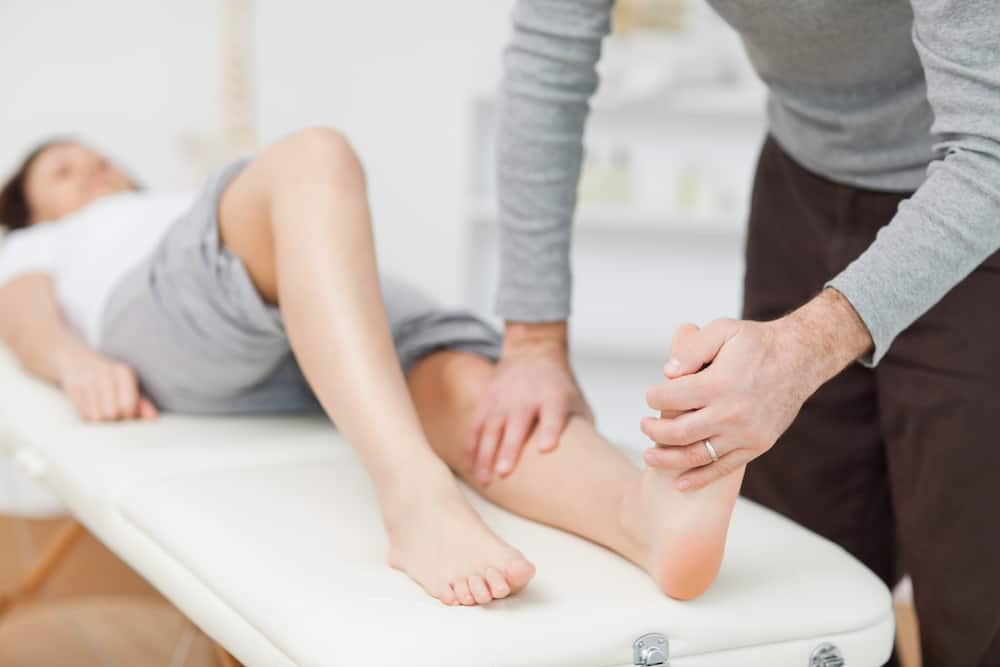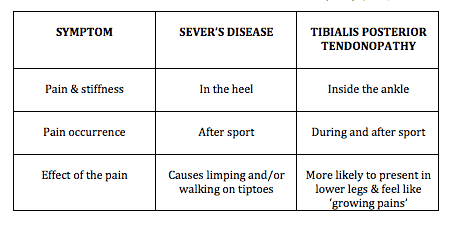
What’s causing your child’s heel pain?
Heel pain in kids is incredibly common. In fact, kids’ sports teams can have up to 30 or 40% of children experiencing heel pain at any one time.
“The greatest incidence of heel pain in children is generally seen in those aged 8-16, who have increased their physical activity in volume, intensity or frequency,” says sports podiatrist and founder of A Step Ahead Foot + Ankle Care Dr Brenden Brown.
Causes of heel pain
There’s a myriad causes of heel pain from soft tissue infection and Sever’s disease to juvenile rheumatoid arthritis, plantar fasciitis and tibialis posterior tendonopathy (muscle overuse).
The question is, what’s causing your kid’s heel pain?
“Two of the most common causes of heel pain are Sever’s disease and tibialis posterior tendonopathy,” says Dr Brenden.
“However, many coaches and healthcare practitioners mistakenly over-diagnose childhood heel pain for Sever’s disease—when the underlying cause is tibialis posterior tendonopathy.”
Sever’s disease and tibialis posterior tendonopathy often share common areas of pain and overlapping symptoms. Yet, unless properly diagnosed treatment will be incorrect and may lead to ongoing pain.

Sever’s disease
“Although more of a repetitive strain injury than an actual disease—Sever’s disease (known medically as a self-limiting calcaneal apophysitis!) is a result of irritation, stress and inflammation of the growth plate (centre) of the heel bone,” explains Dr Brenden.
Causes of Sever’s disease can include:
- Rapidly or recently increasing physical activity in volume, intensity or frequency
- Doing sports in bare feet
- Excessive walking in thongs
- Poor foot posture (flat feet)
- Weak foot muscles
Symptoms of Sever’s disease include:
- Pain and stiffness in the heel
- Heel pain after sport
- Swelling on the heel, which may be sore to touch
- Limping
- Tiptoeing to avoid heel contact with the floor
Tibialis posterior tendonopathy
“Tibialis posterior tendonopathy is a common overuse injury, which may occur due to sudden increases and changes in sports training. It’s a result of the muscles overworking in an attempt to roll the foot and ankle outwards.
“People with over-pronation (often recognised as a flattening or rolling in of the foot) can experience the symptoms of tibialis posterior tendonopathy as a result of the muscles overworking to correct poor foot posture,” says Dr Brenden.
Causes of tibialis posterior tendonopathy can include:
- Poor foot posture (Flat feet is the most common cause)
- Rapid or recent increases in volume, intensity or frequency of physical activity
- Completing sport in bare feet
- Walking excessively in thongs
- Poor footwear choices
- Weak foot muscles
Tibialis posterior tendonopathy symptoms include:
- Pain and stiffness located around inside of ankle
- Heel pain after sport
- Swelling of inside of ankle
- Pain during and after sport
- Pain sometimes confused with “growing pains”
Sever’s vs tibialis posterior tendonopathy (TPT)
While the causes of Sever’s disease and tibialis posterior tendonopathy are similar, there are some key differences to differentiate them.

THE GOOD NEWS: both Sever’s disease and tibialis posterior tendonopathy pain have successful treatment protocols.
If your child is suffering from heel pain it’s important to have their feet professionally checked to identify the ‘actual’ cause of their heel pain and start them off on the correct treatment path.
Treatments include deep massage, strengthening protocols, stretching, footwear recommendations and orthoses should foot posture issues be present.
Related articles:
Think you have a heel spur? Think again
10 things you should know about heel pain
In the media: Dr Brenden Brown talking heel pain
Want to know more about taking care of kids’ feet? Visit: mykidsfootdoctor.com.au.
A Step Ahead Foot + Ankle Care is one of Sydney’s leading foot and ankle clinics. Principal podiatrist and founder of A Step Ahead Dr Brenden Brown (AKA Dr Foot) has been taking care of people’s feet for more than 20 years.
With a background in sports medicine and having served as a former president of the Australasian Podiatry Council, Brenden is a wealth of information when it comes to foot and ankle care.




 Dr Brenden’s White paper report on the “6 Reasons You Won’t Beat Heal Pain” outlines what’s stopping you from beating this and tips on how to stop it in its tracks!
Dr Brenden’s White paper report on the “6 Reasons You Won’t Beat Heal Pain” outlines what’s stopping you from beating this and tips on how to stop it in its tracks!